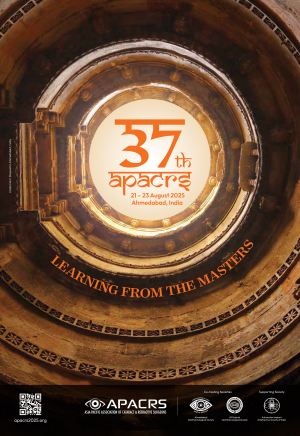Editorial Preview
EyeWorld Asia-Pacific June Issue 2025
Feature: Building Blocks for Surgical Practice
Space Closing: 23 May 2025
Materials Due: 30 May 2025
- Hydro Chronicles
- The conundrum of prolonged post-cataract corneal edema
Post-cataract corneal edema is expected to an extent, but as postop recovery stretches to 1 month or beyond, surgeons begin to treat the situation differently. Three surgeons discussed preop contributors, prevention, diagnosis, and suitable treatment.
- Digital tools for surgical training
New tools in surgical training provide constant improvements to teaching methods. Several physicians discussed digital tools for surgical training and how these fit in with more traditional training approaches.
- The iris prolapsed—don’t panic
Regardless of surgical experience, Richard Tipperman, MD, said iris prolapse is something that happens occasionally, to all surgeons. As such, knowledge of the risk factors that could predispose a patient for iris prolapse, how to handle the event should it occur, and postop considerations are an important refresh to prioritise, from time-to-time.
- Enhancement rates: what’s acceptable and expected?
Patients who opt for an advanced-technology IOLs tend to have higher expectations for their postop vision, and as such, most surgeons proficient with these lenses are prepared to provide enhancements. While some level of enhancements are expected, what is an “acceptable” rate?
- Patient-reported outcome measures: a must-have for ‘solid, consistent medicine’
Dr. Roger Zaldivar discusses the importance of systematically collecting patient-reported outcome measures in refractive surgery. In the article, he highlighted a gap in consistent data collection among surgeons who otherwise often gather this information, primarily for clinical studies.
- BrightMEM corneal allograft: a new treatment for ocular surface disease
BrightMEM corneal allograft (Brightstar Therapeutics) is a new treatment option for ocular surface disease. Several sources discussed BrightMEM, their experience using it, and its treatment applications.
- Handling opacified corneas when cataract surgery is needed
Opacified corneas can present an additional challenge when preparing a patient for cataract surgery. Several physicians discussed how they handle these patients, along with any specific considerations they take.
- Tarsorrhaphy: the cornea’s best friend
Three cornea specialists and one oculoplastics specialist agreed that in some cases, closing the eyelid with either a permanent or temporary tarsorrhaphy is among the best treatments for corneal healing; the procedure is, in many ways, “the cornea’s best friend.”
- Identifying and handling steroid-induced glaucoma
Steroid-induced glaucoma can present a number of issues, most notably increased IOP. Several physicians discussed identifying when and why this occurs and how to react to improve the pressure.
- Pseudoexfoliation glaucoma: management and considerations for ocular procedures
Pseudoexfoliation syndrome, a common age-related systemic condition affecting up to 20% of individuals over 60, primarily manifests in the eye but also shows links to cardiovascular and cerebrovascular issues. Patients with this syndrome require more frequent monitoring due to a heightened risk of secondary open-angle glaucoma.
- Transitioning from SMILE to SMILEPRO



